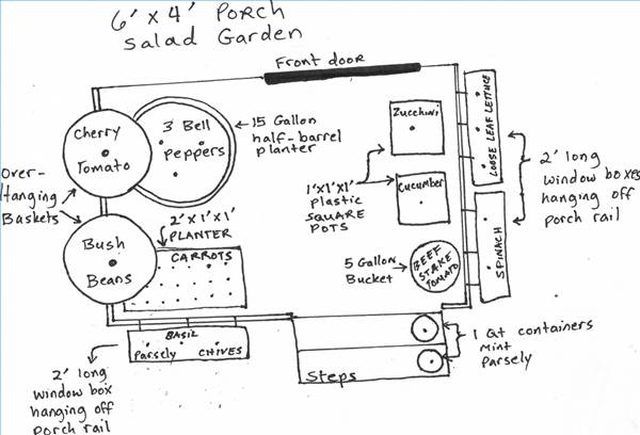Bulbs
Flower Basics
Flower Beds & Specialty Gardens
Flower Garden
Garden Furniture
Garden Gnomes
Garden Seeds
Garden Sheds
Garden Statues
Garden Tools & Supplies
Gardening Basics
Green & Organic
Groundcovers & Vines
Growing Annuals
Growing Basil
Growing Beans
Growing Berries
Growing Blueberries
Growing Cactus
Growing Corn
Growing Cotton
Growing Edibles
Growing Flowers
Growing Garlic
Growing Grapes
Growing Grass
Growing Herbs
Growing Jasmine
Growing Mint
Growing Mushrooms
Orchids
Growing Peanuts
Growing Perennials
Growing Plants
Growing Rosemary
Growing Roses
Growing Strawberries
Growing Sunflowers
Growing Thyme
Growing Tomatoes
Growing Tulips
Growing Vegetables
Herb Basics
Herb Garden
Indoor Growing
Landscaping Basics
Landscaping Patios
Landscaping Plants
Landscaping Shrubs
Landscaping Trees
Landscaping Walks & Pathways
Lawn Basics
Lawn Maintenance
Lawn Mowers
Lawn Ornaments
Lawn Planting
Lawn Tools
Outdoor Growing
Overall Landscape Planning
Pests, Weeds & Problems
Plant Basics
Rock Garden
Rose Garden
Shrubs
Soil
Specialty Gardens
Trees
Vegetable Garden
Yard Maintenance
How to Vegetable Garden in Pots
How to Vegetable Garden in Pots. You don't need lots of land to have a vegetable garden. If you have a sizable courtyard, patio or porch, you can grow a fairly wide variety of vegetables in containers. Even if you only have a sunny doorstep in the city, you can grow a little salad garden that will serve you well. Growing vegetables in pots is also...

You don't need lots of land to have a vegetable garden. If you have a sizable courtyard, patio or porch, you can grow a fairly wide variety of vegetables in containers. Even if you only have a sunny doorstep in the city, you can grow a little salad garden that will serve you well. Growing vegetables in pots is also a great option if you have poor drainage or soil quality. As with any other garden, good planning is the key to success.
Things You'll Need
Containers
Growing medium
Seeds or starter plants
Graph paper
Pencil
Hand trowel
Mulch
Water-soluble fertilizer
Planning
Choose your plants carefully. Every gardener's space is limited, and that goes for container gardeners as well. Chances are that you will not be able to have a farm-sized crop, so decide which vegetables are most important to you. Make a list and prioritize it. Place the ones you simply must have on top, and the ones you can live without toward the bottom. Choose varieties that are smaller and bushy, but that offer high yields.
Consider how much of each vegetable you desire your plants to yield. Then, decide if it is worth the space. For example, you might like the idea of growing corn in a container, but if you only have space for two corn stalks, and each stalk only yields two pieces of corn, you might decide it's not worth growing corn for four cobs. You might prefer to put that space toward a higher yielding plant, such as zucchini or bush beans, with which you can reap a more bountiful harvest.
Research approximately how large a container you will need for each plant. With some varieties, such as loose-leaf lettuce and baby carrots, you'll be able to fit several plants into a good-sized window box. Others, such as broccoli, artichokes or corn, are going to require 15 to 25 gallon containers.
Make a scale diagram of your space, planning out the placement of the pots and what they will contain. Make sure that all your plants are placed where they will be getting at least 8 hours per day of sunlight. The great thing about container gardening is that plants can be moved if need be, but you should think carefully from the start about how to utilize your space most efficiently.
Preparation
Purchase your containers. Simple plastic or terra cotta containers are fairly inexpensive, but if you want a cheaper yet less attractive alternative, purchase plain black containers from growers. Grow bags are also an inexpensive option that are becoming more popular for gardeners concerned more with practicality than appearance. You can also be creative in gathering containers: clean 5-gallon buckets, jumbo coffee cans, home-made wooden box planters or old children's wading pools can make great options. Just ensure that the containers you use are made of nontoxic materials (or untreated wood), cleaned well and have holes drilled in the bottom for drainage.
Choose a growing medium. In a container, the lighter weight the growing medium, the better it is for the plants, as well as the backs of those who might have to move them. It helps promote good drainage and allows the roots more mobility. Look for a potting soil or soil-less medium specifically made for container vegetables, with the right combination of nutrients.
Purchase starter plants from a reputable nursery, or seeds. Plant them in containers the same time you would plant them in the ground. If a plant would require support, such as a stake or a cage, put it in at the time you transplant or sow seeds. Don't try to do this later, as you risk damaging roots and killing the plant.
Care
Add a layer of mulch to help keep the soil moist and protect it from weeds and pests. If you live in cooler climates or feel your space does not get enough sun, try using flat aluminum foil pans cut to the size of the pot, with holes made for the plants to grow through. This will add reflected light and also prevent certain pests, such as aphids. Don't do this in very warm climates, or the reflected light can burn the plants.
Water frequently, and after 8 weeks, begin adding an all-purpose water-soluble fertilizer to the water every couple of weeks. Potted plants can loose moisture and nutrients quickly, but be careful not to overdo it. Too much water will result in root rot, and too much fertilizer can burn the plant.
Care for your plants as you would any ground plants--examine them regularly for pests or disease, weed when necessary and harvest when fruits are ready.